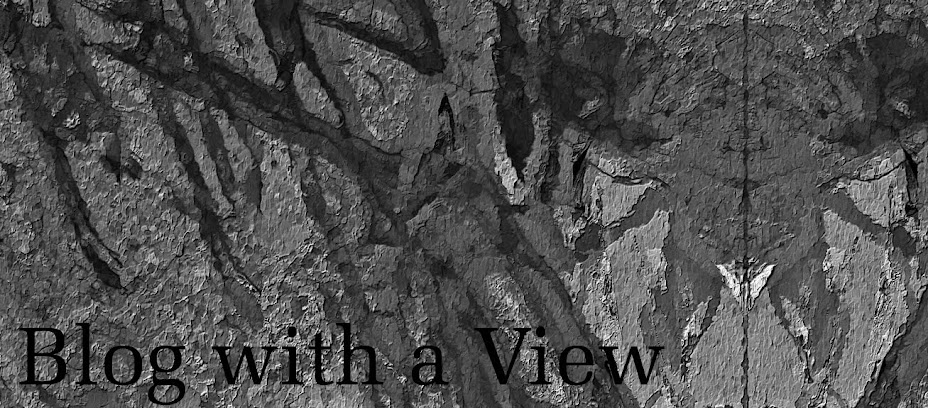Dream of Napalm (2006)
Here's a new image freshly burned from memory.
And for some history, we turn to anyone can write for Wikipedia:
Napalm, or jellied gasoline, is a flammable liquid fuel weapon first used in World War I by the Germans, with the Allies quickly following suit. It was first dispensed using a pressurized air tank dispension system (a flamethrower) against soldiers in trenches. The substance is formulated to burn at a specific rate and adhere to material and personnel. A United Nations convention in 1980 (not ratified by the United States Senate) banned the use of napalm against civilian targets.
[...]
In some cases, Napalm doesn't cause physical pain. It incapacitates and kills its victims very quickly. Those who survive and suffer 3rd degree burns cannot feel pain. The vascular dermis, which was burned in a third degree burn, does not have pain receptors. However, victims who suffer 2nd degree burns from splashed napalm will be in significant amounts of pain.
"Napalm is the most terrible pain you can imagine," said Kim Phuc, known from a famous Vietnam War photograph. "Water boils at 100 degrees Celsius. Napalm generates temperatures of 800 to 1,200 degrees Celsius."
Phuc sustained third-degree burns to half her body and was not expected to live. But thanks to assistance from South Vietnamese photographer Nick Ut, and after surviving a 14-month hospital stay and 17 operations, she became an outspoken peace activist.
International law does not prohibit the use of napalm or other incendiaries against military targets, but use against civilian populations was banned by a United Nations convention in 1980. The United States did not sign the agreement, but destroyed its napalm arsenal by 2001.
Destroyed our arsenal of napalm, did we? From The Independent:
American pilots dropped the controversial incendiary agent napalm on Iraqi troops during the advance on Baghdad. The attacks caused massive fireballs that obliterated several Iraqi positions.
The Pentagon denied using napalm at the time, but Marine pilots and their commanders have confirmed that they used an upgraded version of the weapon against dug-in positions. They said napalm, which has a distinctive smell, was used because of its psychological effect on an enemy.
A 1980 UN convention banned the use against civilian targets of napalm, a terrifying mixture of jet fuel and polystyrene that sticks to skin as it burns. The US, which did not sign the treaty, is one of the few countries that makes use of the weapon. It was employed notoriously against both civilian and military targets in the Vietnam war.
The upgraded weapon, which uses kerosene rather than petrol, was used in March and April, when dozens of napalm bombs were dropped near bridges over the Saddam Canal and the Tigris river, south of Baghdad.
"We napalmed both those [bridge] approaches," said Colonel James Alles, commander of Marine Air Group 11. "Unfortunately there were people there ... you could see them in the [cockpit] video. They were Iraqi soldiers. It's no great way to die. The generals love napalm. It has a big psychological effect."
Deep-sixed our napalm, did we? Napalm.net seems to have some for sale:
Napalm.net has bought 5,000 pounds of weapons grade Napalm and has individually packaged it is safe, attractive, displayable canisters. Each canister holds one liter of actual Napalm which you can ONLY purchase through Napalm.net.
You, too, can love the smell of napalm in the morning.
And remember, kids. Don't forget to read the safety label that comes with your napalm canister:
--do not drink or eat it
--do not burn people with it
--do not burn down trees and grass in your yard
--do not torture little woodland creatures with it
--do not remove it from its original container
--do not store outside of 0-100 degress farenheit
--do not exceed normal barometric pressures
--do not use it as a fuel for your car
--do not shower with your napalm
And, finally, from a report by CNN's Martin Savidge, who was embedded with a Marine unit in Iraq in 2003:
There is a lookout there, a hill referred to as Safwan Hill, on the Iraqi side of the border. It was filled with Iraqi intelligence gathering. From that vantage point, they could look out over all of northern Kuwait.
It is now estimated the hill was hit so badly by missiles, artillery and by the Air Force, that they shaved a couple of feet off it. And anything that was up there that was left after all the explosions was then hit with napalm [emphasis mine]. And that pretty much put an end to any Iraqi operations up on that hill.
Savidge's report contained this disclaimer:
This report was written in accordance with Pentagon ground rules allowing so-called embedded reporting, in which journalists join deployed troops. Among the rules accepted by all participating news organizations is an agreement not to disclose sensitive operational details.
Apparently, disclosing use of "destroyed" non-existent napalm passes the censor's sensitive test.
Or maybe it's just a case of meet the new boss...same as the old boss? From the Sydney Morning Herald:
The Pentagon no longer officially uses the brand-name 'Napalm', but a similar sticky, inflammable substance known as 'fuel-gel mixture', contained in weapons called Mark-77 fire bombs, was dropped on Iraqi troops near the Iraq-Kuwait border at the start of the war.
"I can confirm that Mark-77 fire bombs were used in that general area," Colonel Mike Daily of the US Marine Corps said.
Colonel Daily said that US stocks of Vietnam-era napalm had been phased out, but that the fuel-gel mixture in the Mark-77s had "similar destructive characteristics."
"Many folks (out of habit) refer to the Mark-77 as 'napalm' because its effect upon the target is remarkably similar," he said.
What's in a name change? A bomb by any other name would burn so sweetly.

1 comment:
Ooo, that one's scary. Rolling fire.
Post a Comment